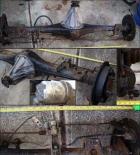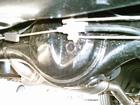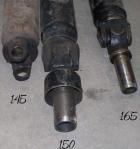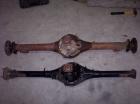| Revision as of 04:05, 11 November 2008 Ddgonzal (Talk | contribs) (->B210 Japan (Hitachi) axle) <- Previous diff |
Revision as of 04:17, 15 March 2009 Ddgonzal (Talk | contribs) (->How to Identify Datsun Diffs) Next diff -> |
||
| Line 258: | Line 258: | ||
| [http://datsun1200.com/modules/myalbum/photo.php?lid=594 http://datsun1200.com/modules/myalbum/photos/thumbs/594.jpg] | [http://datsun1200.com/modules/myalbum/photo.php?lid=594 http://datsun1200.com/modules/myalbum/photos/thumbs/594.jpg] | ||
| <br>[http://datsun1200.com/modules/myalbum/photo.php?lid=594 No back cover] | <br>[http://datsun1200.com/modules/myalbum/photo.php?lid=594 No back cover] | ||
| + | |||
| + | |||
| + | Round or rectangular flange? | ||
| + | * [http://datsun1200.com/modules/myalbum/photo.php?lid=17848 http://datsun1200.com/modules/myalbum/photos/thumbs/17848.jpg] [http://datsun1200.com/modules/myalbum/photo.php?lid=17849 http://datsun1200.com/modules/myalbum/photos/thumbs/17849.jpg] | ||
| + | |||
| To check a Vanette diff,count the bolts holding the housing to the centre. if it's got 8, it's a H165, & the motor will be a a12. If however it's got 10, it's a H190 & the motor should be an a15. discussion: [http://datsun1200.com/modules/newbb/viewtopic.php?topic_id=7370&forum=1 Vanette diff] | To check a Vanette diff,count the bolts holding the housing to the centre. if it's got 8, it's a H165, & the motor will be a a12. If however it's got 10, it's a H190 & the motor should be an a15. discussion: [http://datsun1200.com/modules/newbb/viewtopic.php?topic_id=7370&forum=1 Vanette diff] | ||
Revision as of 04:17, 15 March 2009
What Diff and LSD should I use? The stock differential is a very lightweight yet hardy unit behind the small-bore 1200cc engine. However, there are three big reasons people swap differentials into their 1200:
- To handle increase torque of a larger engine. The stock unit won't handle well the torque even from an A14 engine.
- To gain access to available Limited Slip units. LSD for the stock differential is now quite rare and expensive.
- To get rear disc brakes.
Contents |
Definitions
Differential: The word "differential" refers to:
- The small gears in the rear end that control the left-to-right wheel speeds
- By popular usage it also refers to either:
- the center gear assembly (pumpkin), including Ring and Pinion and the carrier these bolt to, or
- the entire axle assembly including the housing, gears, axles etc.
Ring and Pinion (R&P) are the large final-drive gears e.g. the "ratio" gears. Known as "Crown Wheel and Pinion" (CWP) in British English.
Spider gears: The other smaller side gears are known as the "spider gears". These are the ones that actually allow a differential speed.
LSD: Limited-slip differential. Most designs use a spring-loaded clutch to prevent one wheel from spinning by itself.
Strength of Differential -- Torque Rating
| diff | inches | max. torque capacity |
| H145 | 5.71 | ~100 lb. ft. |
| H150 | 5.91 | ~125 lb. ft. |
| H165 | 6.50 | ~225 lb. ft. |
| H190 | 7.49 | ~285 lb. ft. |
| R200 | 7.88 | ~300 lb. ft. |
| Ford 8 | 8.00 | ~325 lb. ft. |
| Ford 8.8 | 8.80 | ~500 lb. ft. |
| Ford 9 | 9.00 | ~600 lb. ft. |
Horsepower is irrelevent for the differential. What matters is the torque:
Engine Torque x gearbox multiplication = twisting force applied to differential
For example:
- A 400HP engine with 275 lb ft torque could get by with a much smaller diff than a blown 400HP engine with 500 lb ft torque. Yet both are 400 horsepower. Why does the second engine need a differential that's twice as strong? Because torque matters, HP is not directly related to the strength needed.
- A 'built' 125 hp A12 will versus a stock 125 hp 3-liter V6. You need a bigger diff for the latter since it has more torque.
- Lower first-gears in the transmission mean more torque gets to the differential. For example, the stock B110 4-speed first gear (3.757) will multiply torque more than the B310 5-speed first gear (3.513 in the 60a transmission).
The Datsun 1200's H145 differential is only safe for as much torque as an A12 puts out, or maybe as much as 100 lb. ft. of torque.
Datsun used the larger H150 for all A14-powered cars, this was good for maybe 125 lb. ft. of torque. The much larger H165 was good for maybe 225 lb. ft. of torque. Finally, the H190 was the big gun (approx. 7 1/2 inch ring gear) and good for maybe 285 lb. ft. of torque.
Stock Datsun 1200 Rear Axle
Coupes, Wagons and Sedan use the small H145 differential. 1975 and up Datsun 1200 Trucks use the stronger H165 differential.
Car Rear Axle
The stock rear-end assembly works great for the A12 or the A14 engine. This is the H145 (145mm diameter ring gear). The diff is open (non-limited-slip) and the diff assembly unbolts from the front of the axle assembly (like Ford 9", but much smaller). All 1200's (except newer utes) had the H145. Sedan coupe and Wagon had a 3.900 as standard and the Wagons optionally had a 4.11 ratio. The 4.11 ratio diff, when used in Wagons and [as standard] in vans have alloy center.
Datsun Competition (later Nismo) used to sell various ratios: 3.9, 4.111, 4.375, 4.625 LSD (Limited-Slip Differential) units were also available from Datsun Competition. Axle baffles and Oil Coolers were available from Nissan Competition Good for maybe 100 lb. ft. of torque
Datsun 1200 rear axle assembly width is 1305 mm drum to drum.
A15 Diffs If you have swapped an A15 into your 1200, the stock H145 differential isn't strong enough except maybe for use with an automatic transmission. Instead, use an H150 (as fitted to B210s and B310s) or larger differential.
B120 Early Truck
1971-1973 1200 trucks used the same H145 design as the sedan/coupe/wagon. Slight differences between all models.
B120 Late Truck Rear Axle
Newer Ute Differential Newer 1200 Utes (1974 and up) have a much bigger and stronger diff, the H165 (165mm diameter ring gear). This has stronger axles too.
Good for maybe 225 lb. ft. of torque ??? Axle baffles and Oil Coolers were available from Nissan Competition There is one LSD for Type I, and another for Type II
Easy Swaps
B110/B120 axle
Coupe into Sedan into Wagon into Ute: All B110/B120 H145 rear-axle assemblies (housing, etc) generally interchange but may be small difference in the brake line routing, handbrake cable location etc. Also use the shock-mounting plates from the right vehicle:

1200 Shock Absorbers
TIP: Wagons had a alloy carrier.
B10
Use a B10 alloy diff to save a few pounds.
Size of B10 axle:
- 1240 mm drum to drum +- 2mm
- 910 mm distance between the leaf mounts, centre to centre
- 65 mm wide leaf mount plates
banjo housing (no backing plates,axles or drums)
B210 Japan (Hitachi) axle
The easiest swap is to get the entire rear-axle assembly from a 1975 or newer B210 with A14 (140Y) -- this is the H150 (150mm diameter ring gear). The main spring is 55mm longer, but the others can be used on the 1200.
See Bolts right in!

Japan diff
NOTE: The 1974 B210 uses an H145, although the housing is the new stronger design. H145 can be distinguished by studs, whereas H150 uses bolts to fasten the diff to the case.
B210s have a strong axle housing (axles tubes are larger, to 2.2 inch up from 2.0 inch, so U-bolts are different). The B210s use an isolation clamp (the axle tube is rubber mounted), and so the mounting pad is wider. You will need the clamps, u-bolts and shock mounts to do a swap. The housing also user larger ball 72x32x19 bearings (up from 62x32x16) with both inside and outside seals. The B110 only had one seal.
Because the H150 is longer, the driveshaft is shortened by 7mm. The housing face is 2mm toward front of car (diff gear is 5mm larger)

Datsun Competition (later Nismo) used to sell various ratios: 3.545, 3.7, 3.9, 4.111 for the H150.
Whilst NISMO produced H150 LSDs (Limited-Slip Differential), Axles baffles and Oil Coolers were not available from Nissan for the H150.
Good for maybe 125 lb. ft. of torque
You can also just put the H150 gear assembly in the stock H145 axle housing. You just need a 2mm spacer:

Pitroad Spacer
Use a B310 propeller shaft with H150 diff in B110.
B310 Rear Axle
The assembly from a B310 (Datsun 210/Sunny) uses coil springs and is wider, so it's not as good a choice (need modifications). It's also 4 link, so you have to do some significant mods to mount it to the chassis.
B210 Borg Warner Axle
Australian 120Y 4-dr Sedans from July 1976 were locally assembled and used a Borg Warner rear axle assembly. (BW model 68). All were 3.889 ratio. The BW rear ends are pretty strong - meant to be stronger than H165. The BW68 is the same width as a 1200 H145 diff, but have a different input flange, so you will also need the matching 120Y-BW tailshaft. This is the same type of differential in the early Corollas.
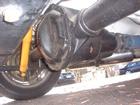
 Japan - welded back cover
Japan - welded back cover
For more details, see main article: Borg Warner Differential
Late B120 Ute, B140 & B122: The next best swap (at least in countries that got 1200 utes) is to get a 1974-and-newer 1200 ute H165 assembly, although it may cost a bit if you can find one.
In North America, Nissan Motorsports use to sell the empty axle housing, axles and other parts. rear disc brakes are available for this axle housing.
The late 1200 ute (1974-up) uses the H165 differential, which is strong enough for a stock CA18DET engine. It bolts right into a coupe or sedan, with this exception
- handbrake adapter fits in a slightly different in position
- make sure you get the ute rear brake fluid splitter
- the driveshaft is 25mm longer (than a B110 shaft) and has a different yoke
discussion: ute difference and ute history
== Toyota == Corolla KE25 or KE30 will increase the track about 3", but is a bolt in.
An option for the Aussies out there is the Australian Toyota Corolla diff. KE25 and KE30 models used the same Borg Warner diff as the 120Y, but with longer axles & tubes. Approx 3" wider in total. this is useful if you have Stanza or similar front brakes, as those struts increase track by about the same amount. So you can use the same offset (fwd) wheels front and rear without looking kinda silly and undertyred at the back if you know what I mean. Using rwd offsets will require a little gaurd work depending on the width and tyre size used. The biggest reason for using the Corolla Borg Warner is the available ratios - 3.89 (manual), 4.1 or 4.3 (auto). A tag on the rear cover has the ratio stamped on it. The Corolla diffs have a different input flange, so you need a 120Y BorgWarner flange which is interchangeable with the Corolla's. You also need a 120Y Borg Warner tailshaft (for the matching flange)[Thanks L18_B110 for this info]
Other Strong Diffs and Choices
Rear-axle assemblies from many different cars be be swapped in the 1200 with minor or major modifications. Advantages are strength, LSD and gear ratio choices. Oh, and if you do the work yourself, swapping in a unit could be cheaper than buying just a new ring & pinion.
Bolt-Ins
Some reported non-narrowed rears are (with possibly the assembly a little wider) are:
- 1967 411 with alloy carrier (1160 mm)
- Ford Falcon ute complete rear which gave you LSD, a live rear, and discs
- Which Falcon model?
- Datsun 620 (pickup) front axle assembly with LSD
- 510, 610,710 station wagon (Davo_1200's 1200 used this diff).
Note that 510 sedans use IRS, a very long-snouted Subaru diff and LSD centre will fit found here in the US on the XT models. It is an 3.70:1 R160 by Fuji Heavy Industries (Subaru) and is the same as the OEM diff in the datsun 510 (1600) also made by Fuji. See R160 Swap.
- US Postal Service Jeep (8 3/4" Chevy rear end with 4.11 gears)
Shortened
Just about any rear axle assembly can be narrowed to fit a 1200, with the right spring perches welded on. For example:- Custom-built Ford 9" (kits are about $500-$700 USD from Currie Enterprises or Moser Engineering - includes housing and two axles, you add brakes and center section from any old Ford sedan)
<li>Toyota Hilux Pickup (6-bolt wheels on 4wd)(5 bolt wheels on 2wd, 4 1/2"pcd same as ford)
<li>1960s Ford Falcon six-cylinder
- Falcon XK width: 1450 mm drum-to-drum

 </ul>
</ul>
Differential Gear Ratios
H145
B10 - Datsun 1000 1967-1970 4.11 4.375 - wagon (VB10) with alloy carrier
B110 - Datsun 1200 1971-1973 3.90 B120 - Datsun 1200 ute 1971-1973 4.11
B210 - 1974 3.90 (north american)
Datsun Competition (later Nismo) used to sell various ratios: 3.9, 4.111, 4.375, 4.625 for the H145.
H150
The Hitachi H150 was fitted to B210s and B310s with A14 and A15 engine. It can cope with more torque than the smaller H145.
Ratios from Nissan North America:
- 1975-1979 4sp and auto: 3.889
- 1975-1979 5sp: 3.70
- B310 1980: 3.889 (Auto & all A12A)
- B310 1980: 3.70 (A14 manual)
- B310 1980: 3.545 (A15 manual)
Datsun Competition (later Nismo) used to sell various ratios: 3.545, 3.7, 3.9, 4.111.
For 1980 and newer vehicles, look at the engine compartment build plate. It will list whether you have an H150B (HB) or regular H150.
- HA38 - 3.889 ratio
- HB37 - 3.700 ratio
H165
Datsun Competition (later Nismo) used to sell various ratios:
-
<li>H165B Type I (to 6/79): 3.545, 3.7, 3.9, 4.111, 4.375, 4.625, 4.875
<li>H165B Type II (from 7/79): 3.364, 3.545, 3.7, 3.9, 4.111, 4.375, 4.625, 4.875
Available from production vehicles: 3.7, 3.9, 4.111 & 4.875 reference: diff ratios
You can get 4.1:1 and 4.875:1 ratios quite easy, it is the same diff that Bluebirds (rwd Maxima) and C20 (Datsun Vanette) -- some with aluminum centers -- and some 4wd Datsun Pickup (non-1200 ute) front diffs (those are wider assemblies, though, so just use the center section). For example: A10 Stanza/HL510 (1978-1982): 3.7:1 180B (610) wagon: 3.89:1 Series 1 Bluebirds (810): 3.89:1 Series 3 Bluebird wagon (910): 3.89:1
Pit Road carries the H165 part (LSD Nismo P/N 38420-RS110). [www.datrats.com.au DatRats] also has been known to carry the 1200 ute stuff.
H190
How to Identify Datsun Diffs
Here are some features to note to tell the difference:
- does center section bolt in?
- count bolt holes
- Measure distance across
- Does center bolt in, or fit onto studs with nuts?
Round or rectangular flange?
To check a Vanette diff,count the bolts holding the housing to the centre. if it's got 8, it's a H165, & the motor will be a a12. If however it's got 10, it's a H190 & the motor should be an a15. discussion: Vanette diffH190

Axle comparison: H190 versus H165H190 was used in most of the Datsun pickups, the 1960's Datsun Roadsters and other Datsuns.
To install a 4.375, 4.625 or 5.125 ring and pinion into a third member equipped with a 3.700, 3.889 or 4.111 ring and pinion a 4.0mm/.157" ring gear spacer must be fabricated. Due to a smaller pinion shaft, the 4.875 and 5.874 ring an [sic] and pinion sets are interchangeable, but cannot be installed into third members equipped with other ratios. Nissan Competition part catalog, 1984 edition pg 58
Datsun Competition used to sell various ratios: 3.36, 3.545, 3.7, 3.9, 4.111, 4.375, 4.625, 4.875, 5.143, 5.429.
There is one LSD for ratios up to 4.111, and another for the larger ratios
Axle baffles and Oil Coolers were available from Nissan CompetitionR160, R180 and R190 These were IRS (Independent Rear Suspension) differentials with long snouts. Used in the Datsun 510, 610 and other IRS Datsuns. The "R" stands for Fuji Heavy Industries. The R180 was used in the front axle of Datsun 4x4 trucks (720, etc).
Propeller Shafts
When swapping rear axle assemblies, the rule of thumb is:
get the matching shaft with the diff
In general, all B110, B210 and B310 driveshafts are the same (or close to same) overall length, but the ends differ:
- Auto vs. Manual
- Japan diff vs Borg Warner diff
- H145 vs H150 vs H165 diff
- Late ute vs Early ute
Coupe, Truck, Wagon and Sedan diffs are the same.
For more details on swapping and interchange of shafts, see Propeller Shaft Swaps.
Limited-Slip and Locking Differentials
A differential is inside the "final drive" (ring & pinion) gears and allows the left and right wheels to turn at different speeds. This is important of course for going around corners. The downside is that if one wheel is on slippery ground (ice, gravel, mud, etc) the car doesn't go at all, as one wheel is turning but slipping and the other not turning at all. Hence the usefulness of LSD or locking diffentials, which are typically used on high-performance cars. Locking is typically used on off-road vehicles, LSD for road vehicles, including racecars. Most productions cars did not and still do not come equipped with LSD. Less expensive cars (like the 1200) did not even have it as an option.
Limited Slip Differential (LSD)
Limited Slip Differentials come in many different types, but the main thing is they limit wheelspin. This is useful in racing and in low-traction surfaces (rain, snow, etc). Different types of LSD are cone-clutch, spring-loaded, clutch-pack, hydrodynamic (viscous), etc. Some trademarks are "Posi-Traction" (GM), "Traction-Lok" (Ford), Torsen.
Nissan Performance racing parts used to sell an LSD for the 1200.
Pitroad sells a brand new LSD for the H165B axle (1985-up Sunny Truck) for about $1200 USD. It is from TRD (Toyota Racing Development) and is a bolt in when using the AE86 ring gear bolts. Pitroad H165 LSD
You can also buy the AE86 LSD (PN 41301-TA005) direct from TRD, be aware however that this is untested, and probably won't fit most H165 carriers. About $850 USD

Spring-loaded LSD vs. conventionalLocking Diffs
A "locking" differential is another animal. When locked there is no slip -- not just limited slip, but none at all. When unlocked, it's the same as an open differential. These are used for racing or for seriously slow off-road work.
Locked diffs are also useful for circuit racing. Many race cars from all sorts of categories use locked diffs. The understeer that is apparent on street/drag cars with locked diffs can easily be eliminated with proper (race) suspension geometry. These settings (camber, castor, and toe) will not be practical for street use though.L18_B110
Examples of different types of locking diffs:
-
<li>The ARB air-locker is popular with Jeeps and other off-roaders. When the dash-mounted switch is flipped, air pressure locks the diff gears together
<li>The "Detroit Locker" was used by some high-performance Ford vehicles in the 60s and 70s. The Locker may be the only modern road-going locking differential, as it can automatically lock and unlock
Spools
<li>For drag racing, the spider gears can be replaced with a sold unit so that both axles are always locked together. This is called a "spool"
 spool (right center)
spool (right center)
<li>The "poor man's" locking diff is to have the spider gears welded together so that it works like a spool, but is obviously cheaper. The danger is of a bad weld and having it explode on the race track
Using a spool or welded diff gears on the street is illegal in most countries, and can be dangerous, especially in the wet. The danger is of spinning out.
Miscellaneous
Brakes: for information on brakes, see tech section article Suspension & Brakes
See also:

![[Datsun 1200 encyclopedia]](/wiki/upload/wiki.png)


